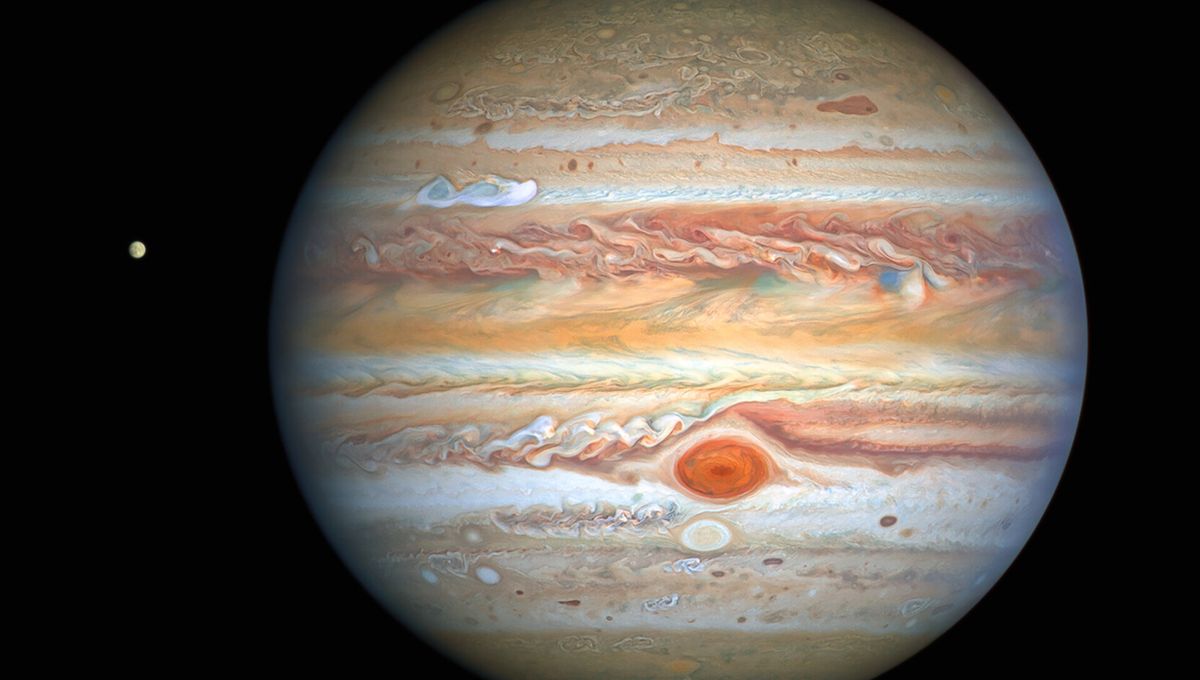
Jupiter’s Great Red Spot, the Solar System’s most infamous storm, is the smallest it has been in observational history. The reasons behind its shrinking fortunes are not fully understood, but it’s been suggested this gargantuan pool of storm clouds isn’t going anywhere soon.
The Great Red Spot is a giant swirling storm in Jupiter’s southern hemisphere that’s so large it could swallow the Earth several times over. Within this giant patch of violent storm clouds, winds spin counterclockwise at speeds that exceed 643 kilometers (400 miles) per hour.
Its origins are unknown, but there have been accounts of a spot on the planet ever since humans started observing Jupiter in the 17th century. Whether it’s the same spot, however, is up for debate since the observational record from this time is patchy (it probably is though).
What is clear is that the spot has been shrinking over the past century. Along with this shrinkage, it appears the spot is becoming less oval-shaped and more circular.
In the 19th century, astronomers estimated that it spanned around 41,000 kilometers (25,476 miles) at its widest point. When NASA’s Voyager spacecraft flew by in 1979 and 1980, the spot was measured to be 23,335 kilometers (14,499 miles) across. In 2014, Hubble then gauged that the spot was just under 16,500 kilometers (10,252 miles) across.
According to Sky & Telescope, recent observations by planetary observer and astrophotographer Damian Peach suggest the spot is currently just 12,500 kilometers (7,770 miles) across.
Truth be told, the giant red spot is somewhat of an enigma. We don’t even fully understand the chemical concoction that makes it beam with a rich red-orange color. Even with today’s super-sharp telescopes, it’s not possible to peer deep within the storm beyond its superficial surface clouds and truly get to grips with the dynamics that forge shape, color, and size.
Despite the reports of its shrinking size, it doesn’t look like the red spot is swirling into a demise. In 2021, research indicated that the outermost winds of Jupiter’s Great Red Spot are accelerating. Some astronomers believe the spot is here to say as it will continue to be fueled by heating and cooling patterns around the vortex.
“I don’t think its fortunes were ever bad. It’s more like Mark Twain’s comment: The reports about its death have been greatly exaggerated,” Philip Marcus, a professor of fluid dynamics at the University of California, Berkeley, said in 2019.
Then again, nothing is certain in this strange Solar System.
“I think that unless something somewhat cataclysmic happens on Jupiter, it will last for the indefinite future, until the jet streams change, so I would say likely centuries,” Marcus reportedly said in a news conference. “Of course, I probably just gave it the kiss of death and it’ll probably fall apart next week, but that’s the way science works.”
Source Link: Jupiter's Great Red Spot Is The Smallest We've Ever Seen It